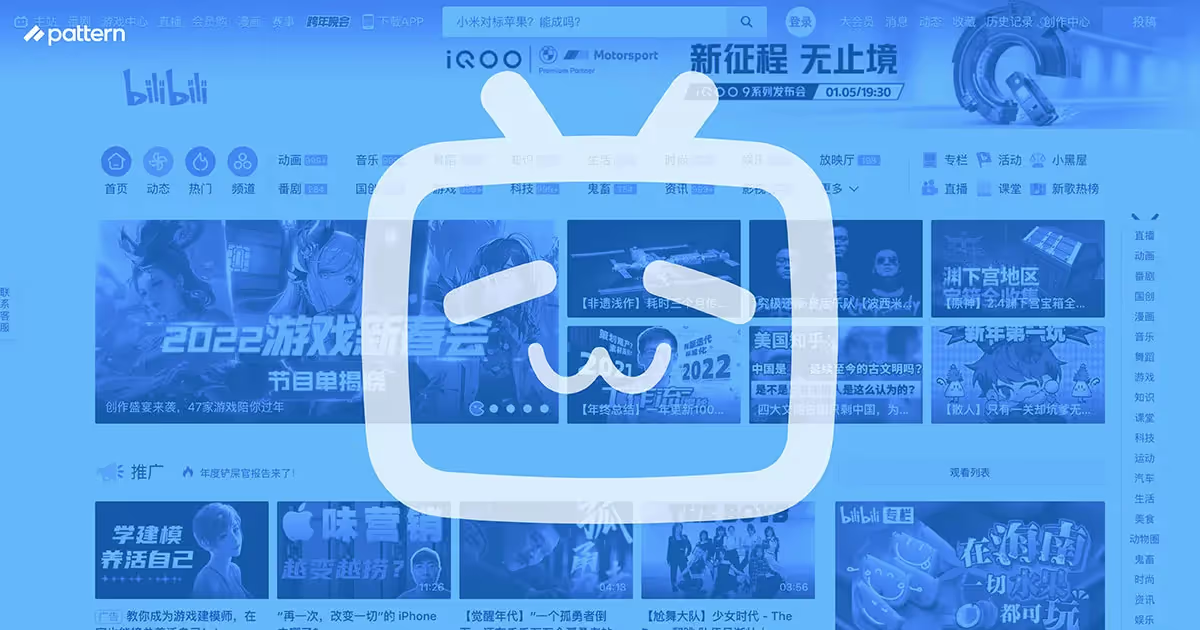Everything You Need to Know About Bilibili
Learn key statistics on the video-streaming platform’s user base, and how brands are using Bilibili as part of their overall China marketing strategy.

Shanghai-based video streaming platform Bilibili—nicknamed B Site—launched in 2009 and has become widely known as the “YouTube of China”. With the backing of Alibaba, Tencent and Sony, brands in the Asia Pacific region are becoming increasingly aware of its marketing potential thanks to its loyal and highly engaged user base. In this blog, we share key statistics on the video-streaming platform’s user base, plus how brands are using Bilibili as part of their overall China marketing strategy.
Bilibili in Numbers
Although not as well known as other Chinese social selling platforms such as Little Red Book, Douyin (TikTok), or WeChat, Bilibili has been deemed up and coming and it’s user numbers speak for themselves. As of Q4 2020, the number of monthly active users on the platform was 202 million, with 86% under the age of 35. The average age of Bilibili users is just 21 years old, with daily time spent on the platform per user at around 87 minutes.
Collaborating with KOLs on Bilibili
Alongside users, many content creators have joined the platform. The number of KOL accounts with over 10,000 followers increased by 75% year-on-year in 2020, and 91% of the content on the platform was uploaded by KOLs. User-generated content makes up the majority of posts shared on Bilbili, and content created by KOLs and KOCs (Key Opinion Customers) carry a lot of influence among Chinese Gen-Z consumers. Many brands work with KOLs to create authentic video content that engages and resonates with their target audience.
How Brands are Using Bilibili
Featuring a mixture of sports, music, personal vlogs, livestreaming services, and more, Bilibili’s reach covers a broad audience and allows for diversified content. Brands leveraging the platform must think outside the box to create content that caters to BiliBili users, who prefer to watch amusing lifestyle vlogs or how-to videos that suit the platform’s search algorithm. Beauty giant Shiseido recently held an online launch event on BiliBili to promote their new serum. The campaign—which invited brand ambassadors to interact with users in real-time—was a success with China’s young audience and received over 1.23 billion views and over one billion engagements.
Thanks to the deeper integration of social networks and ecommerce platforms, KOL marketing can help to maximize traffic to your marketplace store. We always recommend a heavy investment in marketing efforts for brands looking to enter the Chinese market or striving to boost brand awareness. Pattern’s Influencer Marketing Report shares how brands are using KOL seeding and livestreaming on Tmall, Shopee, and Lazada to generate demand and drive traffic. For more information on how we could support you in developing your China ecommerce strategy, or if you are interested in Pattern becoming the authorized marketplace seller for your brand anywhere in the world contact us today.





%20(1).jpg)
